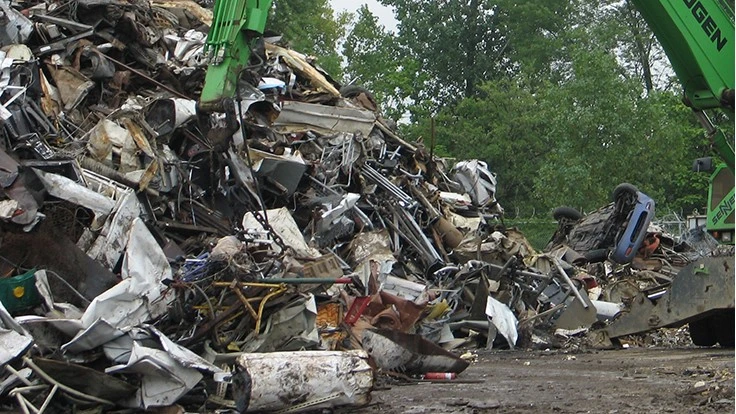
Recycling Today archives
After weathering seven consecutive months of falling ferrous scrap values, processors of iron and steel scrap finally saw their inventory regain a little value in early December. Recyclers and traders indicate tight supply finally kicked in as a factor, boosted by increased demand from overseas.
Scrap prices that started the year on a high note helped keep material volumes healthy throughout the first seven months of 2022. But as prices declined steadily from May through November, processors started telling Recycling Today in the fall about double-digit year-over-year declines in volume.
The accumulated supply seemed to keep pace with lukewarm domestic and global demand all the way until late November. “The market did move, finally,” one trader tells Recycling Today in mid-December, after United States-based shippers were at last able to squeeze a few more dollars per ton from domestic mills and overseas buyers.
That same trader expressed the notion, about 30 days earlier, that the United States ferrous market “may have bottomed out.” He also predicted “a Turkish buying wave,” which was among the factors that has prompted a $53 per ton rise in value for scrap at the port of New York.
Metals information service Davis Index tracked that price increase. The company had its heavy melting steel (HMS) Nos. 1 and 2 blend freight on board (fob) New York Port price bottoming out at about $304 per ton in mid-November.
By the week ending Dec. 12, the same grade outbound from New York had climbed to $357 per ton in value, according to Davis Index.
In the domestic market, the benchmark prime grade No. 1 busheling also bottomed out in mid- and late November, reaching a low of $345 per ton. Davis Index says domestic mills finally paid more for the grade the week ending Dec. 12, though it recorded just a $10 per ton rise.
Obsolete grades might be rising faster because of overseas demand (Those buyers seldom purchase prime grades.) and because light scale traffic has put shredder feedstock and HMS-grade material in comparatively short supply.
In terms of scrap yard flows, one Midwestern recycler tells Recycling Today that “production scrap is flowing,” with “volumes of inbound scrap” tied to the manufacturing sector characterized as “still very good.”
On the demand side, domestic steel output in the first half of December remained well below rates of production in the same time frame in 2021, according to the Washington-based American Iron and Steel Institute (AISI).
In the week ending on Dec. 10, steel production in the U.S., at about 1.64 million tons, was down 7.5 percent from the 1.77 million tons produced in the comparable week in 2021. The mill capability utilization (capacity) rate in Dec. 2022 is 73.3 percent, down from 80.1 percent at the same time in 2021.
Davis Index tracking and reporting show overseas buyers are providing a needed boost in demand, with Turkey the predominant player in shopping for bulk and containerized scrap at various U.S. ports.